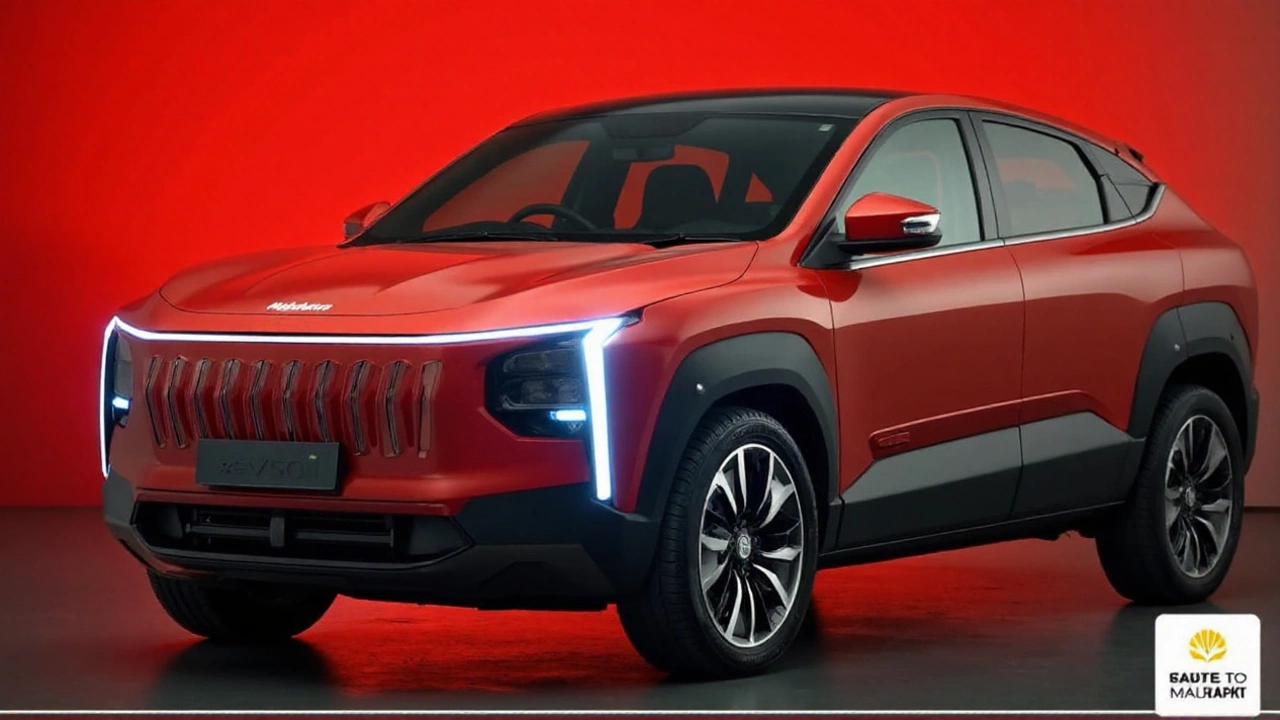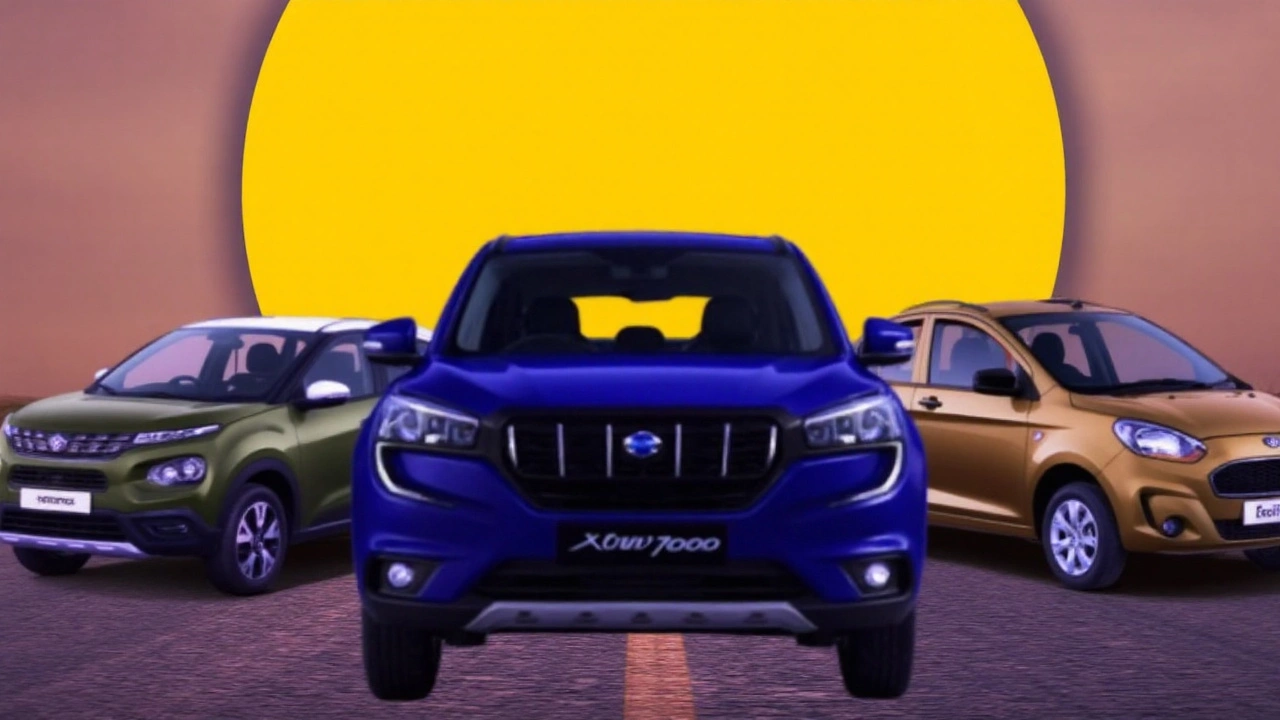GST 2.0 slashes car taxes, triggers sweeping price cuts across brands
India’s biggest tax reset on cars since 2017 is now live, and prices have dropped overnight. With GST 2.0 taking effect on September 22, 2025, carmakers are trimming ex-showroom prices across segments, led by Tata Motors, which moved first and fastest. Mahindra followed with deep cuts on its SUVs, while Maruti Suzuki is preparing a round of reductions—some already visible on its top sellers.
What changed? The complex cess-on-top-of-GST structure has been scrapped. Small cars (petrol up to 1200cc or diesel up to 1500cc) now face a straight 18% GST. Large SUVs move to a unified 40% GST, replacing the earlier 28% GST plus 22% cess stack. Hybrids shift sharply lower to 18% from the earlier 43%, while EVs stay at 5%. The move cleans up pricing, narrows the gap between fuel types, and makes sticker prices easier to understand. The on-road saving varies by state because registration and road tax rules differ, but ex-showroom cuts are immediate and visible.
Tata Motors has announced across-the-board reductions, saying it will pass the full benefit to buyers. Mahindra’s diesel-heavy portfolio gains from the cess removal on larger, taller vehicles. Maruti, with a wide base of small petrol cars and hybrids, sees mixed effects—some models drop sharply, while strong hybrids register smaller but still meaningful cuts.
Here’s where the math lands today.
- Tata Motors: Tiago (up to Rs 75,000), Tigor (up to Rs 80,000), Altroz (up to Rs 1.10 lakh), Punch (up to Rs 85,000), Nexon (up to Rs 1.55 lakh), Curvv (up to Rs 65,000), Harrier (up to Rs 1.40 lakh), Safari (up to Rs 1.45 lakh).
- Mahindra: XUV700 (Rs 97,000 to Rs 1.57 lakh by variant), XUV 3XO (Rs 68,000 to Rs 1.49 lakh; petrol and diesel variants benefit, diesel more so).
- Maruti Suzuki: Grand Vitara petrol (Rs 76,000 to Rs 1.30 lakh expected), Grand Vitara strong-hybrid (Rs 64,000 to Rs 84,000), Brezza (Rs 30,000 to Rs 48,000). Wider portfolio cuts are expected as the company updates price cards variant by variant.
In the premium end, Toyota Fortuner Diesel is seeing estimated cuts of Rs 2.45–3.49 lakh depending on variant, while Hyundai Creta trims are down by Rs 75,000–1.39 lakh, indicating how deeply the old cess was embedded in SUV pricing.

Tata vs Mahindra vs Maruti: model-by-model relief, segment shifts, and what buyers should do now
Who’s giving the most? On headline numbers, Mahindra’s XUV700 sees the single-largest cut (up to Rs 1.57 lakh). But across an entire showroom, Tata Motors offers the broadest and most consistent relief. Multiple Tata models clear the Rs 1 lakh mark, and even entry cars like Tiago and Tigor get tens of thousands shaved off. Maruti’s first visible cuts are smaller in places—Brezza’s Rs 30,000–48,000 stands out as conservative—but its mid-size SUVs and petrol trims are set to benefit more as new rate cards roll out.
Compact SUVs (the fiercest battleground):
- Tata Nexon: diesel variants drop by Rs 99,000–1.55 lakh; among the deepest cuts in the class.
- Mahindra XUV 3XO: Rs 99,000–1.49 lakh on diesel; petrol variants also see healthy drops.
- Maruti Brezza: Rs 30,000–48,000 so far; more modest than rivals at this stage.
Premium SUVs and 7-seaters:
- Tata Harrier and Safari: down by Rs 1.40–1.45 lakh, which reshapes the value equation in the D-segment.
- Toyota Fortuner Diesel: Rs 2.45–3.49 lakh lower, a big move for a model that rarely sees list-price reductions.
Hatchbacks and compact sedans:
- Tata Tiago and Tigor: up to Rs 75,000–80,000 lower, giving budget buyers more room to upgrade trims.
- Tata Altroz: up to Rs 1.10 lakh; notable for a premium hatch.
Hybrids and EVs:
- Hybrids: With the shift to 18%, the gap versus petrol narrows; Grand Vitara strong-hybrid sees Rs 64,000–84,000 cuts, smaller than petrol but significant given the earlier 43% rate.
- EVs: No tax change (still 5%), but competitive pressure could still pull sticker prices or financing offers lower as ICE models become cheaper.
Diesel vs petrol: Diesel SUVs and compact SUVs gain the most because large, tall-body vehicles were hit hardest by the old cess regime. With a flat 40% now replacing the 50% combined rate in many cases, diesel variants—especially in the sub-4m and D-segment—show the sharpest drops.
Percent vs rupee: Why some cuts look bigger. An Rs 1.55 lakh cut on a Rs 15–17 lakh vehicle feels huge, but the percentage reduction often ranges around 5–9% after you account for state registration and insurance. In cities with slab-based road tax, the on-road price can drop a bit less (or more) than the ex-showroom reduction suggests. One example already visible in Mumbai: Tata Punch’s top model slides from Rs 11.95 lakh to about Rs 10.75 lakh on-road, shaving 5–7% off the final drive-away price.
What this means for your EMI: A Rs 1.5 lakh lower loan principal on a 5-year tenure at around 10% interest can trim the EMI by roughly Rs 3,200 per month. For entry buyers, that can be the difference between a base and a mid variant—or between delaying and buying now.
Festive timing is not an accident. Carmakers want momentum going into the festive weeks, and the policy timing helps clear BS6-era inventory and recent facelifts. Expect waiting periods to shift. High-demand variants may stretch out again as shoppers rush back, while slow movers could see extra dealer-level sweeteners.
Will dealer discounts vanish? Some will. When a company cuts the ex-showroom price, dealers often roll back cash discounts because the tax system has already done the heavy lifting. What tends to remain are exchange bonuses, corporate schemes, or low-interest financing tied to OEM partners. Keep an eye on the total cost to compare month-end deals properly.
How to shop smart under the new regime:
- Ask for a revised proforma invoice dated after Sept 22, 2025. The GST line item should reflect 18% for small cars and hybrids, or 40% for large SUVs, with no cess added.
- Booked before the change? Request price protection. Dealers can re-invoice at the new ex-showroom or issue a credit note at delivery.
- Check registration math. Some states levy road tax as a percentage of ex-showroom, others use slabs. Your on-road savings may not be the same as the ex-showroom cut.
- Verify insurance IDV. Lower ex-showroom should translate into a revised Insured Declared Value and a slightly cheaper premium.
- Watch for “handling charges.” Many states disallow them. Push back on anything that looks like a made-up fee.
Brand-by-brand picture right now:
Tata Motors: The company has made the cleanest move, with updated stickers across the garage—from Tiago and Altroz to Nexon, Harrier, and Safari. The Nexon’s up to Rs 1.55 lakh cut is the standout in the compact SUV war, and premium SUVs are squarely cheaper by over a lakh.
Mahindra: XUV700’s cut peaks at Rs 1.57 lakh, the biggest single-model reduction in this round. The XUV 3XO’s diesel trims get close to that, which will pressure rivals in the sub-4m SUV space. If you were cross-shopping diesel SUVs, Mahindra’s math has moved sharply in your favor.
Maruti Suzuki: Early reductions show a split personality. Petrol Grand Vitara trims benefit strongly, while the strong-hybrid gets a smaller but notable step-down. Brezza’s current reduction is milder than rivals in absolute rupees, but expect Maruti to refresh cards across its hatch and sedan lineup as the 18% slab for small cars filters through procurement and pricing cycles.
Luxury and premium SUVs: The Fortuner Diesel’s cut of up to Rs 3.49 lakh is eye-catching in a segment where resale and brand pull keep prices sticky. The Hyundai Creta’s move—Rs 75,000 to Rs 1.39 lakh—reframes the mid-size SUV sweet spot, especially for buyers debating between top trims and the next segment up.
Market ripple effects to watch:
- Used cars: Expect a near-term softening in prices of 2–4-year-old compact and mid-size SUVs as new-car EMIs fall. Diesel SUV resale could see the biggest recalibration.
- Financing: Banks and NBFCs will push pre-approved offers; some OEMs may pair GST cuts with lower-rate schemes to lock in the festive footfall.
- Feature mix: Carmakers could re-jig trim mixes—adding safety or connectivity features to mid variants—to pull buyers up the ladder without raising price points.
So, who offers the maximum relief? If you want the deepest single-variant cut, Mahindra’s XUV700 edges it by a whisker. If you want the broadest, most consistent savings across a showroom, Tata Motors is ahead today—multiple models cross the Rs 1 lakh mark, and even entry cars see meaningful drops. Maruti’s initial cuts are more restrained in places, though its petrol SUVs and small cars stand to gain as the 18% slab works through.
Bottom line for buyers: If you were on the fence, the math finally tilted your way. Lock a test drive, get a fresh quote with the new GST math, and compare total on-road costs—not just the ex-showroom sticker. The festive window will be busy, and the best-priced variants won’t sit around.
